Are there specific requirements for emergency lighting in outdoor areas?
Frequently Asked Questions
Are there specific requirements for emergency lighting in outdoor areas?
Yes, outdoor areas such as parking lots, walkways, and building exteriors may have specific requirements for emergency lighting. These requirements often include illumination levels, placement of fixtures, and compliance with local regulations.
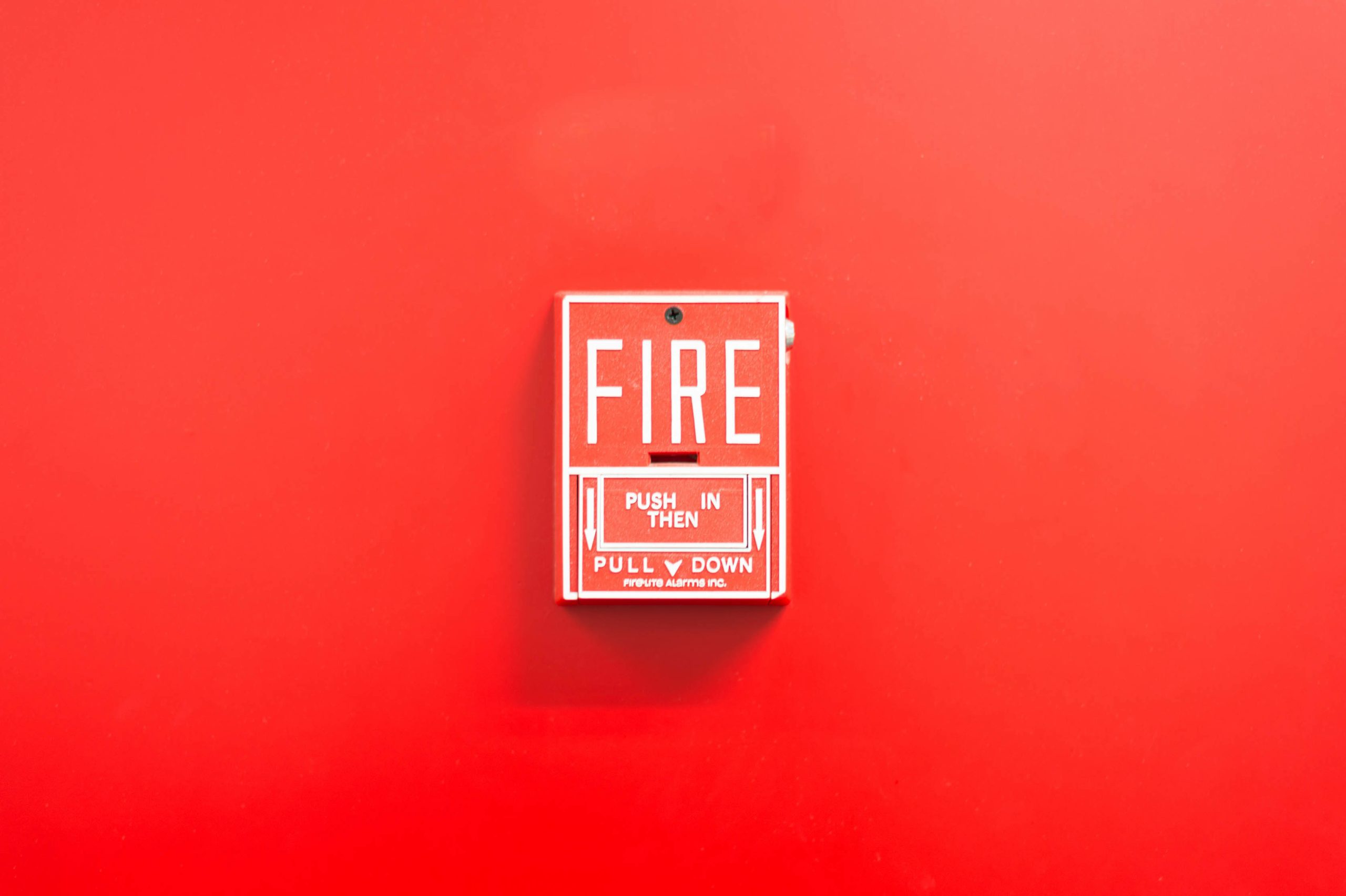
Related FAQs
The six phases of a drill, crucial for training and emergency preparedness, are systematically organized to ensure effectiveness. The process begins with Planning, where a detailed scenario is developed, objectives are defined, and roles and responsibilities are assigned. This is followed by the Briefing phase, where the plan and objectives are clearly communicated to all participants to ensure everyone is prepared and understands their role. Next, the Simulation phase involves executing the drill according to the plan, striving to mimic the conditions of an actual emergency as accurately as possible. During the Monitoring phase, observers watch the drill unfold, taking notes on how well it is executed, how closely participants adhere to the plan, and noting any unforeseen challenges that arise. Immediately after the drill, the Evaluation phase takes place where all participants come together to discuss how the drill went, identifying both strengths and areas that need improvement. Finally, the Review and Improvement phase involves analyzing the results, feedback, and observer notes to make necessary adjustments to the emergency response plan or training procedures, ensuring continuous improvement and preparedness for real-world emergencies.

To conduct a fire drill in the workplace, you should take the following steps:
Preparation: Develop a comprehensive fire evacuation plan that is tailored to the specific layout and needs of your workplace. This plan should include clear evacuation routes, designated muster points, and responsibilities for key personnel.
Communication: Inform all employees about the fire drill and explain its importance. Make sure everyone understands what is expected of them during the drill, including knowing their nearest exits, the location of the muster point, and the procedure for reporting their status once they have evacuated.
Implementation: Trigger the fire alarm to start the drill. Ensure everyone evacuates the building using the designated routes, avoiding elevators, and helping anyone who needs assistance.
Assembly and Headcount: Gather all employees at the designated muster point. Conduct a headcount to ensure that all employees are accounted for.
Review: Review the process with the emergency team and all employees after the drill. Discuss what went well and what could be improved. Based on the feedback received and any observations made during the drill, update the evacuation plan accordingly.

A fire drill checklist is essential for ensuring the comprehensive planning, execution, and review of fire drills. It encompasses a variety of critical tasks, such as verifying the clarity and accessibility of all exits and evacuation routes, ensuring the fire alarm system is in working order, and designating roles within the emergency response team, including support for individuals with disabilities. Furthermore, the checklist emphasizes the importance of clear communication of the drill plan to all building occupants, meticulous observation and documentation of the evacuation process, and the assembly of individuals at a predetermined muster point for a headcount. Post-drill, assessing the evacuation’s response times and overall effectiveness is crucial, as identifying any encountered obstacles or issues and incorporating feedback and observations into the emergency plan for future improvements. This approach guarantees a structured and effective fire drill, promoting safety and preparedness.
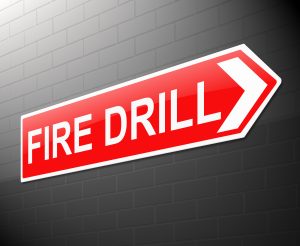
In Canada, the rules for conducting fire drills are governed by provincial and territorial safety regulations, which require that drills be performed at regular intervals to ensure the readiness of building occupants and the efficacy of the emergency evacuation plans. Workplaces, schools, and public buildings must conduct fire drills at least annually, though more frequent drills are encouraged, especially in high-risk areas. Each drill must be documented, including the date, time, effectiveness, and any issues or challenges encountered. The rules emphasize the importance of including all individuals in the drills, making special provisions for those with disabilities, and ensuring that new employees or residents are briefed on safety procedures.
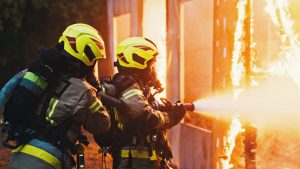
Conducting a fire drill effectively involves a series of five essential steps, ensuring safety and preparedness for all building occupants. The first step is planning, which entails creating a detailed and practical strategy. This strategy should outline primary and secondary evacuation routes and exits, designate muster points, and assign responsibilities to members of the emergency response team, all while considering the specific layout and occupancy of the building. The second step, notification, involves informing all occupants well in advance that a drill will take place, clarifying that it is merely a practice session and not an actual emergency. This advance notice helps manage anxiety and secures cooperation. The execution of the drill is the third step, where the fire alarm is activated to simulate an emergency scenario, prompting all occupants to follow the pre-determined evacuation routes to exit the building quickly and safely. Special assistance should be provided for individuals with disabilities or mobility issues to ensure their safe evacuation. The fourth step is assembly, where, once evacuated, individuals gather at the designated muster points. This step is crucial for accountability and performing a headcount to ensure no one is missing. The fifth and final step is evaluation, which involves conducting a debriefing session after the drill to discuss the effectiveness of the execution, highlighting what went well and identifying areas for improvement. This feedback is invaluable for refining the emergency plan and addressing any issues encountered during the drill, ultimately enhancing safety and preparedness for future emergencies.
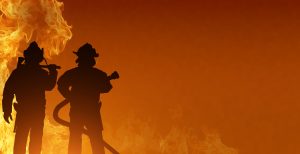
Muster points are commonly indicated by signs that are bright green. This choice of green is intentional as it is universally associated with safety and is easily distinguishable from other emergency signage, which might use colours like red or yellow. Green signs typically feature a white pictogram or text to provide contrast and enhance visibility and readability. Standardizing this colour helps reduce confusion during an emergency, ensuring that individuals can quickly identify the location of the muster point, even in situations of panic or low visibility.
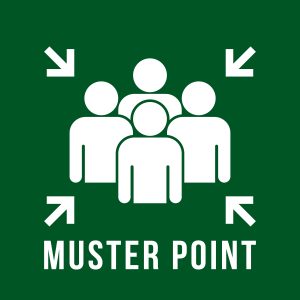
In a building, a muster point is a designated area where occupants are instructed to gather in the event of an emergency, such as a fire, earthquake, or security threat. These points are strategically chosen based on several factors, including ease of access, safety from hazards, and capacity to accommodate all building occupants. Muster points must be marked, often with green, obvious signs, and should be located away from the building to avoid risks like falling debris or intense smoke. These areas need to be accessible to everyone, including individuals with disabilities. Regular drills and training ensure that all occupants know how to reach the muster point quickly and safely from various locations within the building.

In Canada, a muster point is a critical component of emergency response plans across various types of establishments, including workplaces, schools, and public buildings. Strict safety regulations and standards guide the designation of muster points in Canada to ensure they are identifiable and accessible. Canadian health and safety laws require that these points be marked clearly, usually with obvious signs. Employers and building managers are responsible for ensuring that all occupants know the location of muster points through regular drills and safety training. The exact requirements and placements of muster points can vary by province or territory. Still, the overarching goal is universal: to provide a safe, predetermined area where all individuals can gather during an emergency to facilitate a headcount and ensure no one is left behind.
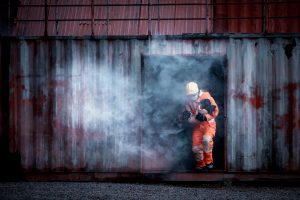
While often used interchangeably, there are subtle differences between a muster point and an assembly point in the context of emergency preparedness. Both terms refer to designated locations where individuals gather during an emergency. However, a “muster point” generally implies a smaller, more specific location within a more extensive emergency plan, often used in industrial or workplace environments. Muster points are typically used to gather employees from a specific department or area before moving to a larger, more inclusive “assembly point.” In contrast, an assembly point is usually a broader location where everyone gathers regardless of initial location. Assembly points are typically used in larger-scale evacuations, encompassing all individuals in the vicinity, and are often located further away from the immediate risks or dangers of the emergency.
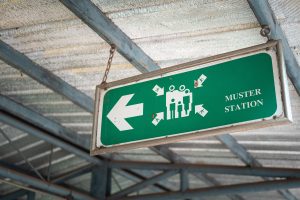
EDMONTON AREA BUSINESS OWNERS TRUST ADVANCED FIRE PROTECTION SERVICES EVERY DAY.
SERVICE AVAILABLE IN NORTHERN ALBERTA, EDMONTON SURROUNDING AREA, & RED DEER AREA
COMMERCIAL FIRE PROTECTION SERVICES
Edmonton’s Best Provider for your fire safety service needs. Protect your business from going up in flames. If you need installation, monitoring, or recertifications, call us today!
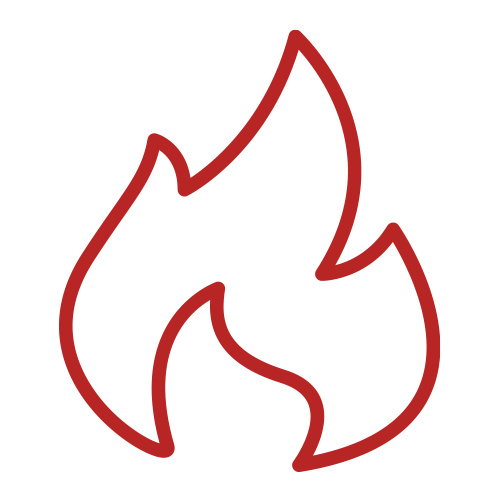
Fire Suppression Systems
Commercial Kitchens, Paint Booths, Mobile Food Trucks, and More

Sprinkler Systems
Full System Inspection, Testing, and Repairs

Fire Alarm Systems
ULC Certified for 24/7 Fire Alarm Monitoring, Maintenance, and Testing

Fire Extinguishers
Equipment Maintenance, Installation, and Sales

DSC Security System
Installation & 24/7 Monitoring

Emergency Lighting Systems
Maintenance, Installation, and Sales
